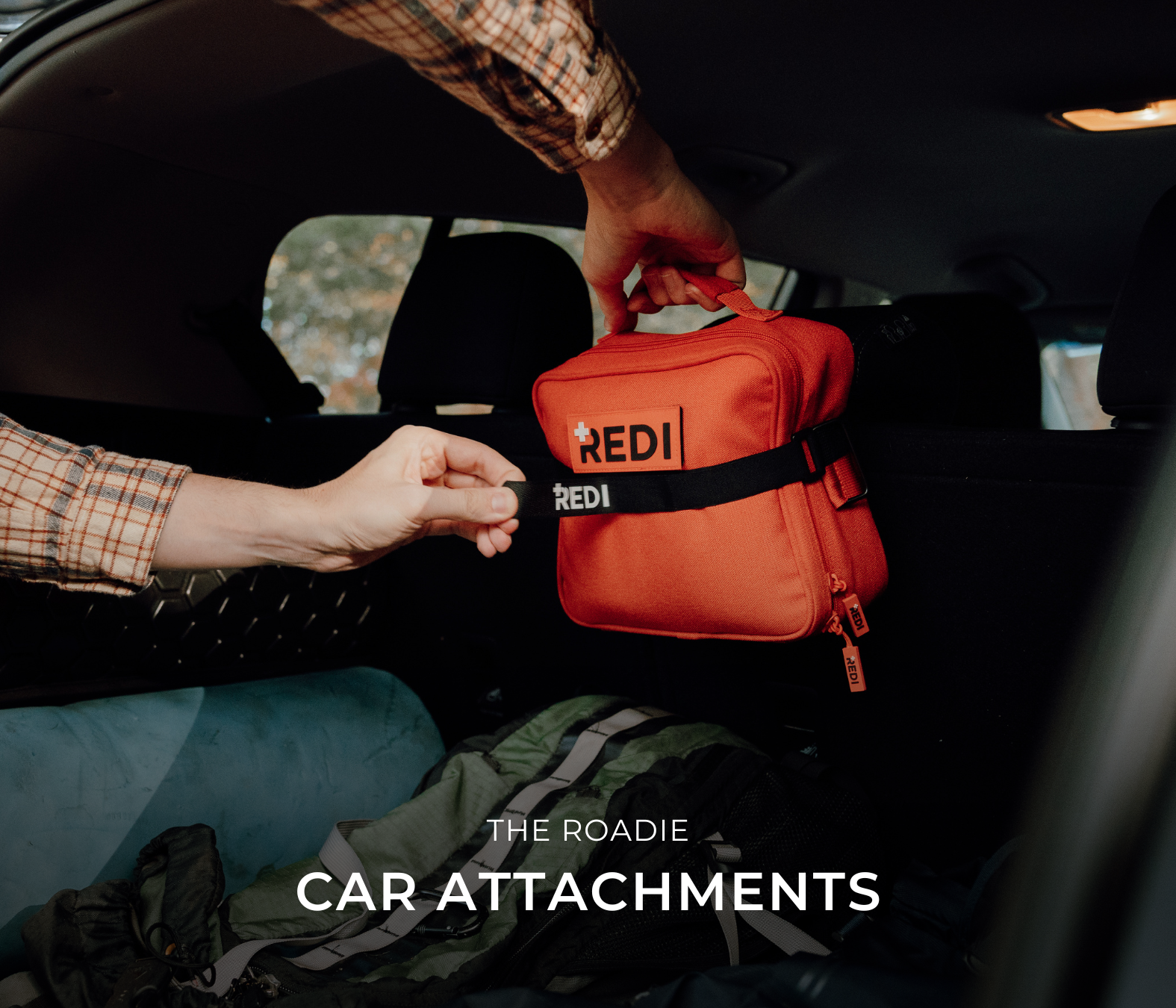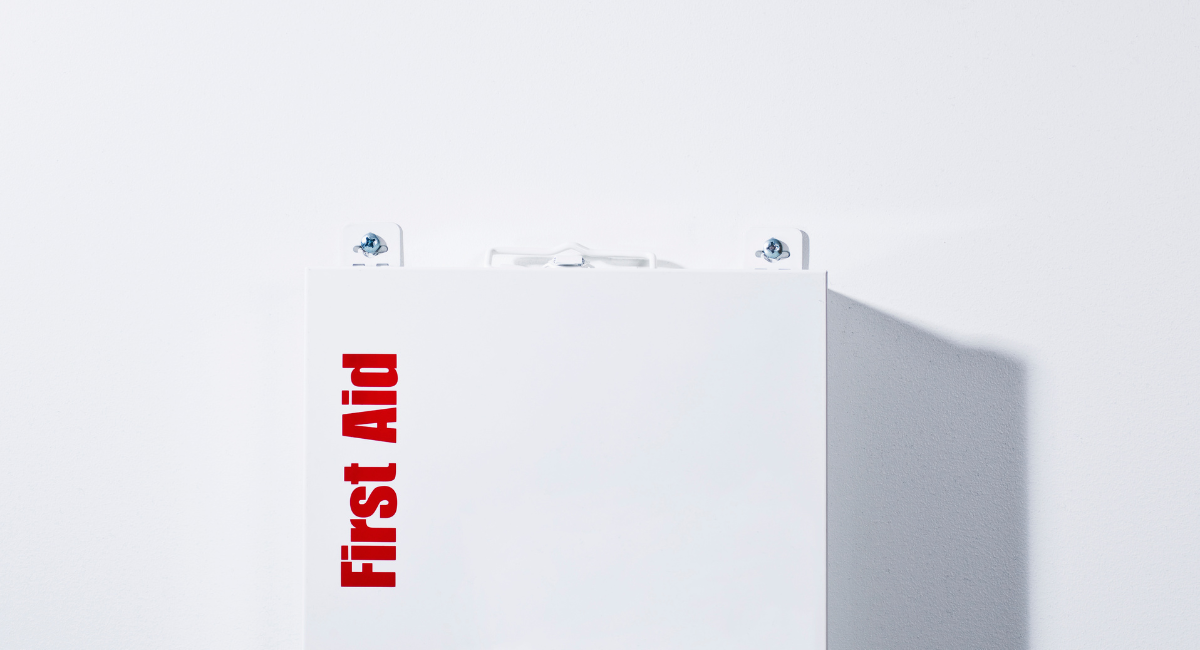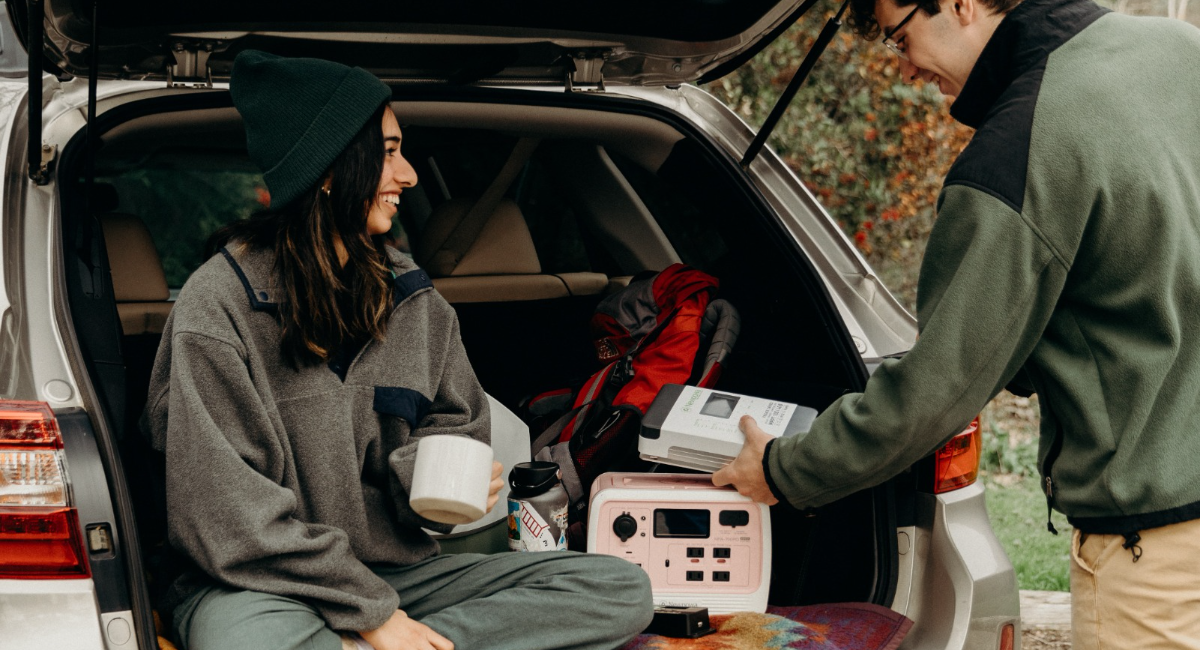A safety kit is essential for any household. Here are the 10 items you need to keep your family safe.
Difference Between First Aid And Safety
These terms often go hand and hand with one another, as first aid and safety both involve the prevention of injury and illnesses. Unfortunately, the difference between a first aid and safety kit is often ignored.
First aid is concerned with the immediate treatment of an injury or illness, whereas safety is more focused on avoiding accidents, injuries, and illnesses. Safety is all about minimizing risks and preventing harm from occurring in the first place.
Having a well-stocked first-aid kit in the home can help respond quickly in the event of an emergency, but without a safety kit, there may be nothing to prevent the emergency from occurring in the first place. It's important to remember that safety should always come first – prevention is better than having to rely on a first aid kit after the fact.
In terms of a safety kit vs. a first aid kit, there is no debate. Having a well-stocked first-aid AND safety kit in your home is an essential part of being ready in case of an emergency.
10 Essential Items
#1. Fire extinguisher
A fire extinguisher is a vital item in any safety kit. It is used to put out small fires quickly, before they can spread and cause serious damage or injury. If a fire does break out, it’s important to act quickly and safely. Remember, never try to fight a fire if it’s too large or if it is spreading rapidly. In these cases, evacuate the area, take your emergency kit with you, and call 911 immediately.
When choosing a fire extinguisher, be sure to get the right type and size for your specific needs. An ABC-rated extinguisher is usually the best choice, as it is effective against most common types of fires. Additionally, check the instructions on the side of the extinguisher to make sure you know how to use it properly.
#2. Multiple Light Sources
Light is an essential element of any safety kit and should not be overlooked. It can help you to see in low-light situations or in the event of a power outage, and it can help others see you in the dark.
Having a reliable light source, such as a flashlight, allows you to easily provide first aid when needed, as well as find items and be aware of your surroundings.
Different Types Of Light Sources:
- Flashlights: handheld device that emits a beam of light when turned on.
- Headlamps: wearable light source that straps onto the head and leaves both hands free for other tasks.
- Glow sticks: chemical-based light source that glows in the dark and does not require batteries or electricity.
- Lanterns: larger light source that can be used to illuminate a larger area, often powered by batteries or propane.
- Emergency candles: provide light and heat during a power outage or emergency situation, but should be used with caution.
- Flares: signaling device that emits a bright, visible light for a short period of time, typically used in emergency situations.
Best Overall: LED flashlights.
LED flashlights are generally the most energy-efficient and durable option. LED flashlights are compact, easy to store, and can be used for both task lighting and emergency lighting.
LED flashlights typically offer three settings: low, medium, and high intensity, which provide illumination from a few feet away up to several hundred feet away. Some models even come with an adjustable zoom feature, allowing the user to focus the light on specific areas of interest when needed.
In the event of an emergency or when rescue is needed, an LED flashlight can also act as a signaling device.Investing in a high quality LED flashlight with a high amount of lumens, different beam options, long battery life can make all the difference when in an emergency.
Best Hands Free Option: LED Head Lamp
Head lamps provide you with hands-free light in situations where you may need both of your hands to perform a task. For example, if you need to investigate a problem in a dark area or tend to a person's injuries.
LED head lamps are also very efficient, lightweight, and adjustable, making it easy to change the intensity and focus of the light to suit your needs.
Widest Range Of Light : Lantern
A lantern can illuminate an entire indoor or outdoor area, within reason. Lanterns cast a soft, yet bright light in all directions, whereas a flashlight and head lamp typically have an intense, directional beam.
Most battery powered lanterns have a light range of about 20-25 feet, providing ample light in situations such as a power outage or camping excursion. Lanterns are a reliable, consistent source of light, that will provide visibility and peace of mind in both emergency and non-emergency settings.
Best For Emergencies: Hand Crank Flashlights
Hand crank flashlights provide light without the need of batteries, making them a cost-effective and reliable alternative to traditional flashlights. Hand crank flashlights come in handy during power outages and natural disasters when you are away from home or do not have spare batteries laying around.
Even if you have extra batteries on hand, they can quickly run out. In a power outage lasting several days and multiple battery operated light sources on, you would need a large supply of batteries to hold you over.
With a hand crank flashlight, however, you can charge the light simply by cranking the handle, and depending on the model, the light generated can last up to several hours! Some models even feature a built-in battery which helps store and transfer the energy generated by cranking the handle, making it last even longer. This means that you can use the flashlight in an emergency and be sure that it will last until the situation is resolved.
Best Indirect Source of Light: Waterproof Matches
Waterproof matches can be extremely handy in situations where making your own source of heat and light is needed. These matches are much more reliable than regular ones since they are sealed with wax, making them waterproof and wind-resistant. They can also be stored for longer periods of time without the risk of moisture ruining them.
Waterproof matches also make an excellent fire starter if you’re looking to get a fire going quickly. When lit, the match will remain lit for several seconds, allowing you to light other combustible materials such as paper, kindling, or even leaves.
Other light sources include candles and glow sticks. While you most likely have candles lying around your house, they can be a potential fire hazard, will burn out with rain and wind, and are not portable.
Glow sticks on the other hand, are portable and water resistant, but the light pay off is weak. For children, they are fun, but the potential of them breaking and leaking hazardous chemicals is why we would steer clear of them.
#3. Multi tool
Multi tools have multiple components, such as a knife, screwdrivers, scissors, and more, that can be used to address a wide range of potential problems.
For example, if a screw needs to be tightened or a piece of fabric needs to be cut, having a multipurpose tool can help with these tasks without the need for multiple individual tools Due to their versatility and compact size, they are a great tool for any emergency scenario and a key item that should be in every emergency preparedness kit.
Shop Redi's 21-in-1 Multi Tool
#4. Duct tape
Duct tape is a staple of survival kits because it can be used for many different tasks. Its strong adhesive can hold pieces together or seal objects, regardless of the conditions (ex: when a pipe bursts), and it can also be used to mark trails, create makeshift splints, and even make a tourniquet if needed.
Always keep a roll in your kit. Yes, you may have a roll of duct tape laying around your house, but if it takes time to try and find it in the garage or junk drawer, it may be too late. This point also applies to the other items within your safety kit too. While you may have a flashlight and other items already in your house, having them all in one, well-organized safety kit saves you time in a stressful situation.
#5. Emergency Thermal Blanket
Emergency thermal blankets are made of a lightweight, tear-resistant material and provide insulation in the form of a reflective surface that can reflect body heat back to the user. These "blankets" are waterproof, windproof and highly compact, making it easy to store in any kit.
- Protects you from hypothermia, exposure, and other serious medical conditions caused by extreme temperatures or weather conditions.
- Reflective surface can be used to signal rescuers.
- Acts as an emergency shelter, providing water-resistant and windproof protection during natural disasters or unexpected situations like snowstorms or tornadoes.
- Provides an extra layer of insulation in colder climates or areas with little shelter from the elements, keeping you warm and dry until help arrives.
- Doubles as a ground cover or makeshift tarp to create a dry place to sit or sleep.
#6. Non-perishable Food & Water
Having a supply of non-perishable food is important in any safety kit. You never know when you may need to leave your home or when a disaster may cut off access to food sources. Having at least enough food for several days is important. Look for food with a long shelf life, preferably with a five year shelf life.
Food bars are often a good choice as they can provide enough calories and essential nutrients in a small space.Non-perishable foods such as dehydrated fruits, granola bars, nuts, dried meats, and canned goods can all be great options for your safety kit.
It’s important to make sure that you have enough food to last for at least three days, as well as food that is not too heavy or bulky.
It's important to make sure that the amount of food in your safety kit is adequate for the size of your family. Generally, each person needs 2,000 calories a day to survive, so you should aim to have enough food for at least three days for each person in your family.
This means that for a family with up to four people, the total amount of food needed should be around 24,000 calories (or about 12,000 food bars). Remember to check your supply regularly and replenish when needed.
Water
Water is a vital part of any safety kit and should always be kept in a container that is easy to transport. Water can be used for a variety of different things in an emergency situation, including drinking, firefighting, hygiene, and first aid. In the case of a disaster, you may find that your access to clean water has been compromised, so it's important to have a few gallons stored in your safety kit.
It's also important to ensure that the water is rotated on a regular basis, as it can become contaminated over time. Additionally, if you live in an area prone to floods or other natural disasters, it's a good idea to keep some floating containers that can store several gallons of water in your safety kit.
In addition to keeping plenty of water on hand, it's also a good idea to include some water purification tablets or a water filtration device in your safety kit. These tablets can be used to purify drinking water if necessary, and filters can be used to filter water from other sources such as rivers or ponds in order to make it safe to drink. Having access to clean drinking water can make all the difference in an emergency situation, so make sure these items are included in your safety kit.
Family Size
It's important to take the size of your family into consideration when packing your survival kit with water. The rule of thumb is to pack a gallon of water per person per day, meaning that a family of four should have at least 12 gallons of water in their kit for a three-day emergency supply.
In addition to drinking water, having enough water for washing hands and first aid is also recommended, so plan accordingly when packing your safety kit.
#7. First aid kit
A first-aid kit is a must-have item in any safety kit. You never know when an injury or illness may strike, and having the right supplies can make a difference in an emergency situation.
Your first-aid kit should contain a vast array of items for treating minor injuries, such as adhesive bandages, antiseptic wipes, antibiotic ointment, burn cream, medical tape, and medical gloves. It should also include a thermometer, tweezers, safety pins, scissors, a magnifying glass and other items necessary for treating injuries and illnesses.
#8. Battery-powered/hand crank radio
With a battery-powered or hand crank radio, you can receive important information about the weather, natural disasters, and other emergencies. It can also be used to communicate with family, friends, or authorities if needed.
Battery-powered radios come with various features such as AM/FM bands, shortwave listening capability, and NOAA weather alerts. In addition, many of these radios are able to recharge with a USB cable or from solar energy. Hand crank radios offer the same features, but with the added advantage of providing electricity for your radio without needing to replace batteries.
Having access to a radio in an emergency can make all the difference when it comes to being informed and prepared. Additionally, it can provide peace of mind knowing that you have reliable communication in a time of crisis.
#9. Cell phone/chargers and a backup battery
In today’s digital world, having a cell phone with chargers and a backup battery is essential for safety. In an emergency situation, you want to be able to communicate with loved ones and emergency services.
Be sure to store a compatible charger and an extra battery in your safety kit so that your phone is always ready when you need it. In the event of an evacuation, you are most likely scrambling to get out and grab as many things as you can. Having compatible chargers included within your safety kit provides you with a peace of mind.
In situations where power is not readily available, a hand crank, portable charger should also be included within your emergency kit. It is also a good idea to store important contact information and any other pertinent details on your phone so that it is easily accessible. This could include emergency contacts, the address of your home, or the license plate number of your car in case of an emergency.
#10. Extra Batteries.
We cannot emphasize this enough: having extra batteries in an emergency situation can make all the difference. With so many devices, tools, and appliances being powered by batteries, it is essential to keep a stockpile of extra batteries in the event of an emergency. If your carbon monoxide detector or flashlight runs out of juice, you don’t want to be stuck in the dark or in a potentially hazardous situation.
Being prepared with extra batteries is always a good idea! Make sure you have enough AA, AAA, C, and D batteries to cover all of your devices, as well as a portable jump starter.
And just because you have an assortment of batteries laying around the house, does not mean that you are good to go. Make sure you have all types of batteries, in an easy to find area of your safety kit. When your flashlight goes dark, and other emergency supplies are tucked away inside, finding small batteries could become burdensome.
Having a survival kit with these key items is one thing, but having quality items that can hold up during a disaster is what matters the most. Other things to consider are evacuation routes and backup plans.
If you are at home, evacuation routes are critical for ensuring that everyone can safely get out of danger and find one another. However, what if you are at work or out running errands? Having a backup plan that you and your family know can help eliminate the initial shock of an emergency situation and guide you to act accordingly.
Additional Items to Include in Your Emergency Kit
- Copies of Important Documents and a List of Critical Information
- Prescription Medications and OTC Medications
- Personal Hygiene Items
- Emergency Ponchos
- Sewing Kit
- Sleeping Bags
- Pet Items (food and any medications). We also suggest adding a locator tag to your pet's collar in the event that they get separated from you.
- Emergency Disposable Urinal
- Paracord and Zip Ties
- Carbon monoxide detectors
- Respirator Masks
- A Map
- Compass
- High Decimal Whistle
- Paper, Pencil, and Waterproof Pen
- Disposable Cups, Plates, and Utensils
- Cash
Size of Emergency, Safety Kit | Things to Consider
Family Size
It should be large enough to store all the necessary items, but small enough that you can carry it with you if needed. Depending on the size of your family and what items you need to include, a backpack may be the best option as it can fit many of the necessary supplies.
If you are accounting for multiple people, then having two backpacks may be a suitable option rather than one large bag. With two backpacks, you can distribute the weight of the survival and emergency gear equally.
Kit Exterior/Organization
Make sure to choose a backpack that is lightweight and made from durable material that can withstand wear and tear. The best emergency kits have a water resistant exterior and compartmentalized sections, making it easy to find items in a pinch. As said before, the size of your kit largely depends on the size of your family.
Another thing to consider is the amount of emergency food and water rations you need for your family. Emergency rations of water are inevitably heavy, so opting for a water filtration straw or canteen and water purification tablets would free up space and lighten the load.

Color
The best emergency kit is a bright and bold color so that stands out against its surroundings.
Storage | Where to keep your safety kits & emergency kits?
It’s important to store your safety kit in a place where it is easily accessible and convenient. Depending on your home's size, you may want to consider storing it in multiple locations.
If you live in a two-story home, for example, you can store a kit on each level or in different rooms. You can also opt to keep a kit in your car or garage in addition to the one inside your home.
For maximum protection, place your safety kit near entrances, such as front and back doors, as well as other areas of your home that are prone to emergencies, like the kitchen. Make sure everyone in your family knows where the kits are located so they can easily access them when needed.
If you are constantly away from home due to work or a lengthy commute, we suggest keeping a modified version in the trunk or glove box of your car. There are first aid kits that are small, compact and made specially for the car, like our Roadie, Car Readiness kit.
Further advantages of having multiple first aid and survival kits include instant access, a plethora of supplies, and peace of mind knowing that when a disaster strikes, you will be good to go.
Checking Your Supplies
Remember to check the contents of your first aid kit and survival kit periodically to ensure everything is still there and in good working order.
Sometimes batteries can be faulty or leak. Medications expire. You could have used something a while back and forgot.
Whatever it may be, I suggest keeping a master list of all the first aid supplies and survival gear inside. It is also worth while to add quantities of each item to the list. Not only does this help you sustain supply, but also allows you to make sure you have enough supplies on hand.
First Aid, Safety, Survival, and Emergency Kits? What kit do you need?
When it comes to emergency preparedness, having a first aid kit, safety kit, survival kit, and emergency kit are all important pieces of equipment.
A first aid kit is designed to treat minor injuries such as cuts, scrapes, and bruises. Safety kits are designed to help prevent accidents in the home and workplace, while survival kits are designed for use in wilderness settings where there is no access to medical assistance. An emergency kit is designed for use during extreme weather events, natural disasters, and other large-scale emergencies.

First aid kits should include a variety of items such as bandages, antiseptic wipes, antibiotic ointment, scissors, tweezers, pain relievers, and burn cream. Having a full supply of first aid supplies can be extremely useful in the event of a minor injury or medical emergency.
Safety kits should include items such as fire extinguishers, carbon monoxide detectors, flashlights, emergency whistles, spare batteries, duct tape, and multipurpose tools. These items can be invaluable in preventing accidents and keeping family members safe. It is also important to have an emergency source of light such as waterproof matches and battery-powered or hand crank flashlights, as well as a battery-powered or hand crank radio in order to stay informed during an emergency situation.
Survival kits are designed for use in the outdoors and should contain items such as water, non-perishable food, emergency thermal blankets, rope & zip ties, and a knife. These items can be essential for survival in remote areas with no access to medical care.
Having an emergency kit is important for any situation that involves an imminent threat to your safety or wellbeing. Emergency kits should include items such as water, non-perishable food, an emergency thermal blanket, first aid supplies, a flashlight or headlamp, a radio, extra batteries, and any other items you may need in case of an emergency.
It is important to make sure your first aid kit, safety kit, survival kit, and emergency kit are up-to-date and properly stocked with essential supplies.The contents of these kits should be checked regularly and restocked as needed.
It is also important to store these kits in an easily accessible location so they can be quickly retrieved in the event of an emergency. No matter where you live or work, having the proper supplies in first aid, safety, survival, and emergency kits can be invaluable in keeping yourself and your loved ones safe.
Consensus
At the end of the day, the type of emergency kit you have isn't as important as the fact that you have one and that it is adequately stocked with the necessary items.
Whether you call it a first aid kit, safety kit, survival kit, or emergency kit, it doesn't matter—what matters is that you have the items that could potentially save your life or someone else's in the event of an emergency situation.
Take a look at our Roadie Collection - a comprehensive first aid and safety kit for your vehicle. Although it comes with custom car attachments to adhere the kit to the interior of your vehicle, it can also be used inside the house or workplace as an at-home safety kit.









